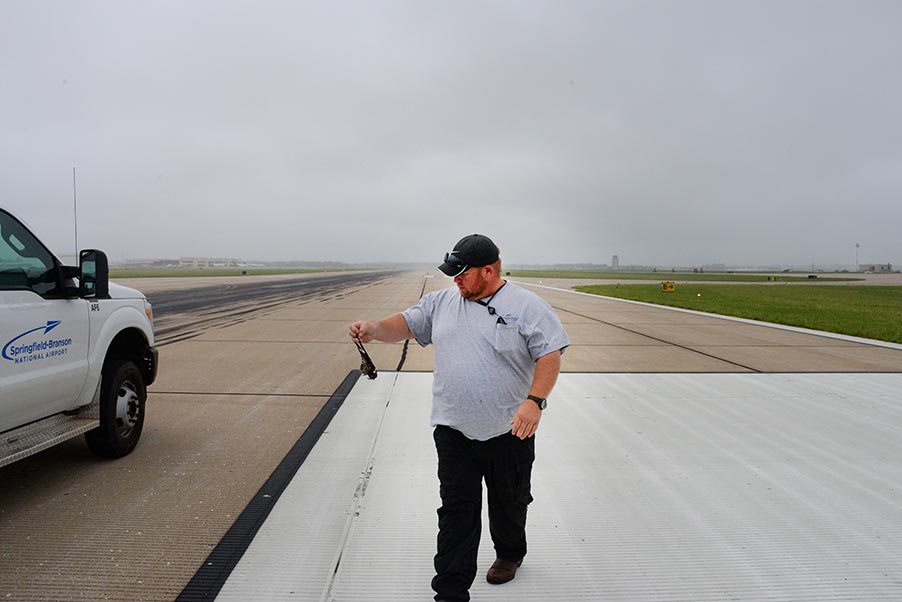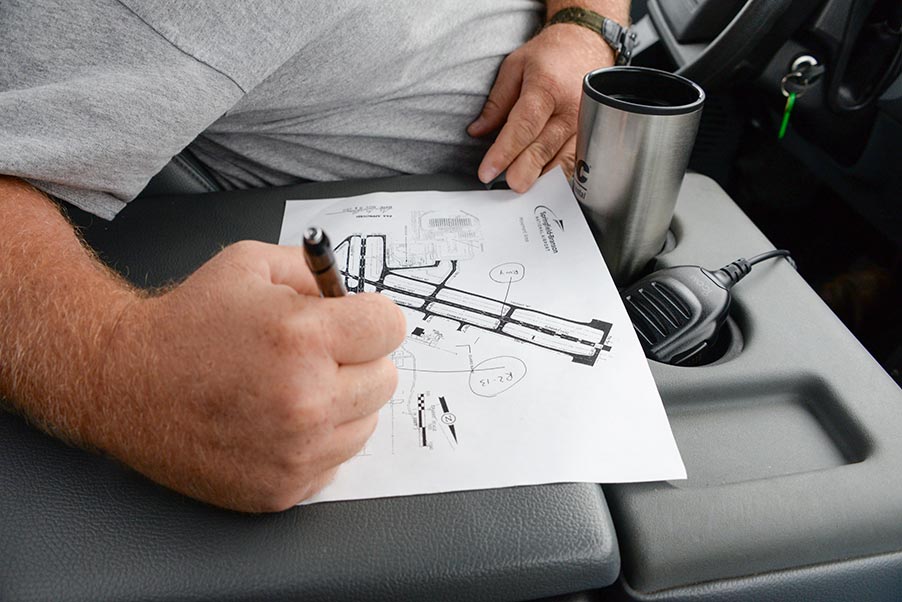Apr 03 2024
Things You Don’t Know About Your Airport — Wildlife Management!
In 2009 a US Airways flight struck a flock of Canadian geese over New York City. Both engines failed and the pilot successfully ditched the plane in the Hudson River. Live television pictures showed passengers walking on the plane’s wings as it floated down the river. The incident received world-wide attention and the pilot became a national hero. It was the “Miracle on the Hudson.”
That was an extreme example of wildlife damage – it’s usually much less dangerous and dramatic, but the aviation industry takes all wildlife strikes seriously.
The Federal Aviation Administration (FAA) puts it this way: “During the past century, wildlife-aircraft strikes have resulted in the loss of hundreds of lives worldwide, as well as billions of dollars in aircraft damage. Through policy and guidance, research and outreach, we strive to stay ahead of the issue.”
The FAA requires certified airports to have a wildlife management program. At lot of time and effort goes into the programs. If it sounds like busy work, consider this: in the past ten years there have been 297 recorded wildlife strikes at the Springfield airport. 99 percent of the strikes involved birds. One percent involved coyote and bats.

An airport maintenance supervisor collects a dead bird during a runway inspection
Example …
On November 25, 2023, an American Airlines plane arrived in Springfield from Dallas with a dent in one of the engines. Gray, black, and white feathers were recovered from the engine. We sent them to the Feather Identification Lab at the Smithsonian Institution. The lab reported back: snow goose.
Where did the strike occur? That’s an open question. The incident report notes that snow geese are usually not found in the Dallas area. Given that fact, one might reasonably conclude that the strike occurred in the air, between Dallas and Springfield, or during landing in Springfield.
Another example …
On November 4, 2022, an American Airlines plane aborted takeoff from Springfield after striking a coyote. There was no damage to the plane. The incident report notes that the coyote struck a bolt between two tires on the right side of the plane, and that the “coyote was killed and collected by airport personnel.” There’s no doubt on this one – the strike occurred at the Springfield airport.

The bird’s location is logged and recorded in the FAA Wildlife Strike Database
Managing the Wild
Many U.S. airports voluntarily report wildlife strikes to the FAA, ours included. Reports are compiled in the FAA Wildlife Strike Database. These reports help the FAA make recommendations about controlling airport wildlife.
Here are some of the other things we do to control wildlife …
- A nine-foot-tall chain link fence surrounds the airfield. The airfield is where aircraft land and takeoff.
- We avoid creating habitat that would encourage certain kinds of wildlife to live or hunt at the airport.
- Airport staff is always on the lookout for wildlife.
The chain link fence helps deter large wildlife from entering the airfield. This includes deer and coyote. Deer rarely get in, but coyotes occasionally do. In the past decade, two have been struck by aircraft.
The fence also helps with wild turkey, opossums, and skunks. By the way, every critter we’ve mentioned lives on, or near the airport.

This deer is standing about 30-feet from the airfield fence
When it comes to habitat, some of what we do is obvious – we don’t, for example, have a big pond on the airport that attracts geese. Despite that, we’ve had four geese strikes in the past ten years.
Here’s some wildlife habitat that’s not so obvious: grass.
Tall grass is an absolute no-no at an airport. Tall grass provides habitat for small animals like rabbits, mice, and moles. These critters, by themselves, don’t pose much of a threat to aviation, but here’s the rub: they attract hawks and owls. These large birds of prey can, under the right circumstances, do significant damage to an aircraft. In the past ten years we’ve recorded eight owl strikes, and 10 hawk strikes.
The airport covers more than 3,000 acres, so we spend a lot of time dealing with the grass:
- We mow. This is essentially just like residential lawn mowing.
- We have agreements with local farmers that allow for the production of grass hay. That grass is mowed several times a year and becomes hay bales for livestock feed.
- Agreements with local farmers allow for cattle grazing outside the airfield fence. Cattle keep the grass low.
Safe Travels
In 2023 the airport had a combined total of 64,947 landings and takeoffs. Wildlife management was just one of the things we did to make sure they were all uneventful. For airport customers wildlife is out of sight and out of mind, but rest assured that it’s always top of mind with us.
 Bleisure: extending a business trip with leisure days to relax and disconnect. Give it a try!
Bleisure: extending a business trip with leisure days to relax and disconnect. Give it a try!